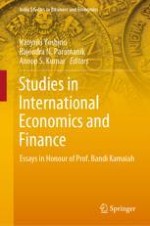2022 | OriginalPaper | Chapter
Is There an End to the Currency Crisis in Turkey?: An Empirical Investigation
Authors : Balaga Mohana Rao, Suvvari Ananda Rao
Published in: Studies in International Economics and Finance
Publisher: Springer Singapore
Activate our intelligent search to find suitable subject content or patents.
Select sections of text to find matching patents with Artificial Intelligence. powered by
Select sections of text to find additional relevant content using AI-assisted search. powered by
